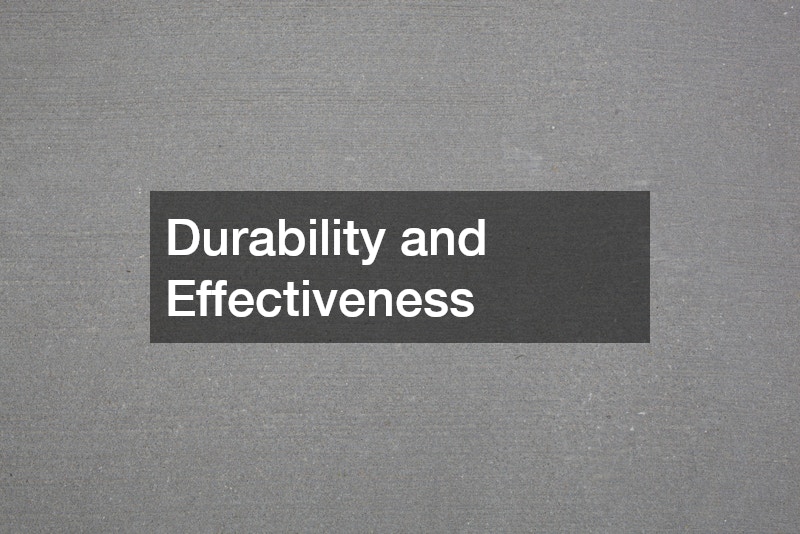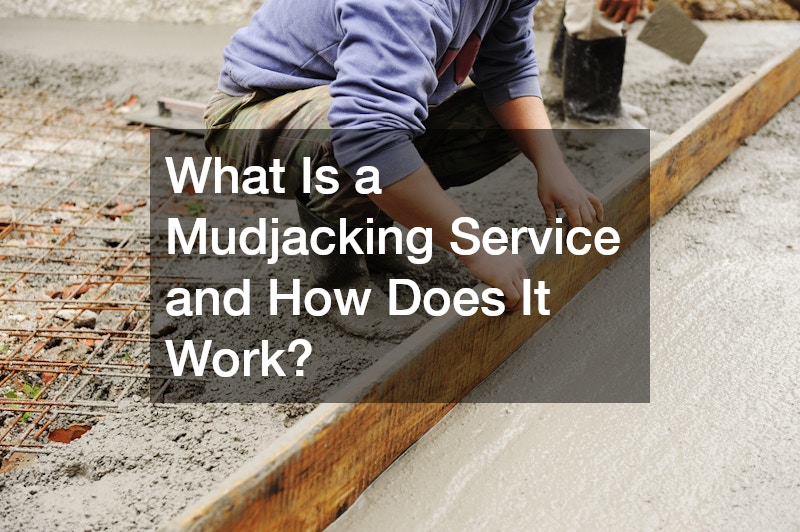Stability and safety are critical when it comes to concrete structures, whether they are residential walkways or commercial foundations. Mudjacking is a solution that restores stability without the need for complete replacement, making it both a practical and economical choice. Understanding what a mudjacking service does is essential for anyone looking to maintain their property, ensuring that foundational issues are addressed promptly and effectively.
What Exactly is Mudjacking?
Definition and Purpose
Mudjacking, also known as slabjacking, is a technique used to raise and level sunken concrete slabs. This process involves the strategic injection of a specific slurry mix under the concrete surface to lift it into its original position.
Mudjacking not only improves the aesthetic appeal of concrete surfaces but also enhances safety by eliminating tripping hazards.
The primary purpose of mudjacking is to provide an effective solution for uneven concrete surfaces without the high cost of replacement. This method is especially beneficial for driveway repairs, sidewalks, patios, and other concrete surfaces experiencing settlement issues. By stabilizing the existing concrete, mudjacking extends the life of the slab and postpones the need for expensive replacements.
Comparison with Other Repair Methods
While mudjacking is a popular choice, it is important to understand how it compares to other repair techniques like slab replacement and polyurethane foam lifting. Slab replacement is often considered when the concrete is severely damaged or too thin for mudjacking; however, it typically involves higher costs and increased project length. On the other hand, polyurethane foam lifting, though faster and cleaner, is generally more expensive than mudjacking and may not be as environmentally friendly.
Another significant difference is in the materials used; mudjacking employs a mud-like slurry made of sand, cement, and water, whereas foam lifting relies on chemical reactions to elevate the concrete. The heavier nature of the slurry mix used in mudjacking offers weight-bearing benefits, making it ideal for applications where long-lasting support is needed. Foam methods may provide initial results quickly, but they tend to lack the heft required for more substantial support over time.
How Does the Mudjacking Process Work?
Step-by-Step Procedure
The mudjacking process begins with a careful assessment of the concrete slab to identify the areas needing elevation. Small holes are drilled into the affected surface to prepare for the injection of the slurry. This strategic drilling ensures minimal disruption and maximal lifting efficiency.
Next, a slurry mixture of water, cement, and sand is pumped under the slab through these drilled holes. As the mixture fills the voids beneath the concrete, it gradually raises the slab back to its original height. Once the desired level is achieved, the injection is halted, and any excess slurry is cleared from the surface.
In the final step of mudjacking, the drilled holes are sealed with a suitable compound to restore the surface appearance. Clean-up is minimal, and the concrete slab can typically be used within a few hours. This process exemplifies the efficiency and effectiveness of mudjacking in restoring the utility and safety of concrete structures.
Materials and Tools Used
The success of a mudjacking operation heavily relies on the materials and equipment used throughout the process. The main component used is the slurry mix, which consists of water, sand, and a cement-based material. This sturdy mixture provides the necessary force and stability to lift and support the sunken concrete slabs.
In addition to the slurry mix, specialized tools are required to complete the mudjacking process. These include a portable drill for creating access holes in the concrete and a hydraulic pump for the precise injection of the slurry. The tools are designed for efficiency, ensuring minimal disturbance to the surrounding environment as the slab is raised.
Why Choose Mudjacking Over Other Methods?
Cost-Effectiveness
One of the most appealing aspects of mudjacking is its cost-effectiveness, especially when compared to complete concrete replacement. The process of replacing concrete not only involves higher material costs but also substantial labor and time. Mudjacking significantly reduces these costs by reusing the existing slab as the foundation, requiring fewer resources and less manpower.
Moreover, mudjacking typically offers faster completion times, meaning less labor costs and reduced inconvenience for property occupants. Since the process takes less than a day and the concrete is usable shortly after completion, businesses and homeowners benefit from minimal downtime. These time and cost savings combined make mudjacking a financially sound choice for addressing concrete settlement issues.
Durability and Effectiveness
Beyond cost efficiencies, mudjacking provides long-term durability, sustaining the condition of concrete surfaces for many years to come. The heavy slurry mixture used in the process adds substantial weight and support, ensuring that the slab remains level over extended periods. This durability is especially crucial in areas with high traffic or substantial weight loads.
Another point of mudjacking’s effectiveness is its ability to address a wide range of issues—it’s not limited to just a single type of concrete crack or dip. Whether facing minor surface settling or significant foundation issues, mudjacking’s versatile application provides a comprehensive repair approach. This adaptability is why many consider it over more restrictive methods like foam lifting, which may not offer the same breadth of use.
Mudjacking is a crucial service that offers an effective and economical solution for the stabilization of concrete surfaces. Its ability to quickly and efficiently raise sunken slabs makes it an attractive option for homeowners and businesses alike. By choosing mudjacking and integrating its process into their maintenance plans, property managers can ensure the long-term safety and integrity of their concrete structures.




